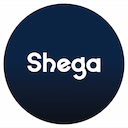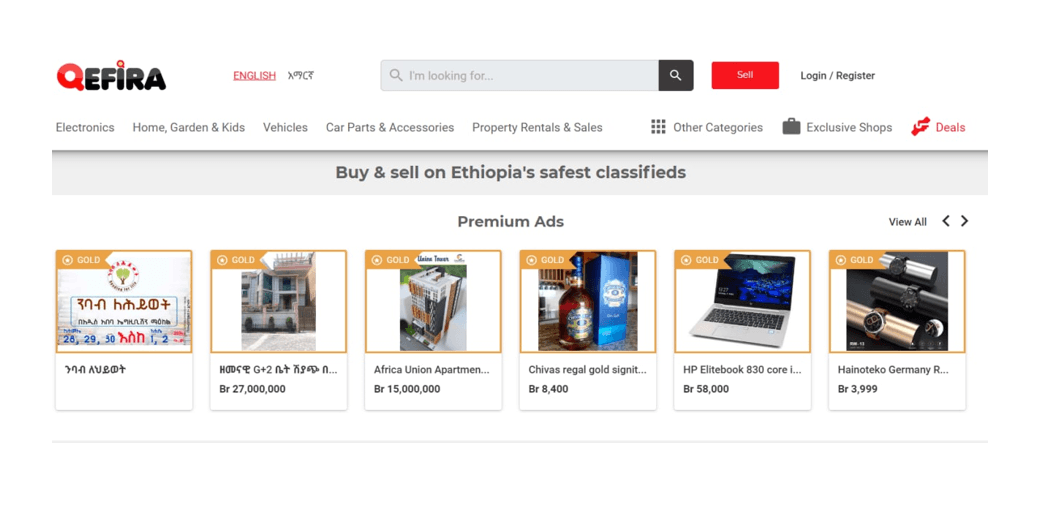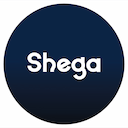Progress for 0 ad


Team Shega
Addis Ababa, Ethiopia

By Dagmawi Demeke
The buying and selling of goods online is no longer an alien concept in Ethiopia. Many businesses are going online, and e-commerce is growing.
Some of the big players in Ethiopia’s e-commerce scene are online marketplaces, a type of e-commerce website or app that connect potential buyers and sellers all within one platform.
These platforms only provide a way for these two parties to meet and do not have an online payment option or delivery service as such tasks are meant to be handled by the parties involved.
From AfroTie, an app with over 100,000 users, to massive websites like Qefira, which offer a vast database of real estate and electronic goods aggregated from thousands of sellers, Ethiopia’s online marketplace has its big names.
According to a 2020 report by Cepheus, about 21 ecommerce platforms in Ethiopia exist in the general marketplace segment. These platforms provide a wide range of products, and their number has since increased.
Dagmawi Demeke, a digital marketing specialist and SEO strategist at Xenon Digital, is reviewing the top three web-based online marketplace providers in the sector right now: Qefira, Engocha, and Jiji.
The review uses platforms like SEMRUSH, which are publicly available tools to track and analyze website traffic.
In Dagmawi’s review of these three platforms, which will be a series, he will look at their traffic volume, the broad categories they offer, their monetization strategies, as well as user experience.
Qefira, one of the pioneers of the digital era in Ethiopia, began operations under HoBiNet Media Plc about five years ago. Now Qefira is the leading web-based classifieds platform that allows sellers to reach their target audience.
Users can buy and sell items ranging from real estate property to cosmetics, classified into 11 categories.
Buyers can roam free on the site and see what they like but to post items for sale, users have to sign up. Deals are facilitated outside of the platform and buyers have the opportunity to communicate with sellers and resellers via phone calls, Facebook, WhatsApp, and Telegram.
Qefira, available in English and Amharic, has also recently been trying to implement a Shopify-like model, allowing businesses to create a virtual store on their platform and advertise their entire enterprise, not just the items or products they sell.
With 200,000–450,000 visits per month, Qefira receives more than three times the monthly traffic of its nearest rival, Engocha.
Qefira had 84,300 unique visitors in the previous month of June 2022 and ranks 54th in the country in terms of traffic volume, an index that also includes both local and international websites.
Compared to Engocha, the second biggest online marketplace in Ethiopia, Qefira has a relatively low bounce rate at 45.39% (a bounce rate is a metric used to calculate the percentage of users that exit a website without visiting another page or triggering another request).
Visitors to the e-commerce platform come from all over the world, but most of the traffic is from within the country. Ethiopia accounts for 82.68% of traffic, with Norway accounting for 6.71%, the United States for 4.08%, Germany for 0.97%, and the United Kingdom for 0.85%.
A deeper look at Qefira’s demographic makeup reveals that men account for approximately 66.12% of the users and women for 33.88%. On the other hand, the 25–34 age bracket holds the majority, followed by the 18–24 age bracket.
With the majority of interest and traffic generated by keywords in the property listing and electronics categories, Qefira is a valuable platform for real estate agencies and small businesses selling electronics and appliances.
A growing number of electronic and appliance stores rely on Qefira to drive a large portion of their sales. Numerous small businesses in Merkato, Bole, and Mexico have the platform as one of their primary sales channels.
When a buyer searches for a specific item, Qefira indexes ads listed in the category of the searched item and displays them on top.
Paid ads rank high in their respective categories, while “organic” or standard posts are listed based on their recency. Hence, sellers constantly updating posts to make them rank higher is a common practice seen on the platform to increase product visibility.

An e-commerce platform with a great user experience design (UX design) smoothly walks shoppers through the process effectively.
Qefira doesn’t have the best UX design out of the three online marketplaces in Ethiopia. But it has a cleaner and more focused design that helps showcase products—such as large and detailed imagery that a customer needs to make their decision. In addition, Qefira’s web design is more geared towards offering a better experience on desktops than mobile phones.
Compared to Jiji, the third biggest player in the sector, the Qefira website provides a poor user experience. Qefira’s average visit duration of 05:44 minutes falls short compared to Jiji’s average visit duration of 13:25 minutes, largely due to its outdated UI design.
Qefira has monetized its platform with the use of both native ads and Google Ads. The native (sponsored) ads include premium business listings, where businesses pay to have their business page highlighted on the homepage and ad bundles.
Qefira provides two ad bundle options for sellers who want to increase visibility and engagement for items sellers they’re trying to advertise: the silver package and the gold package.
The Silver Plan costs sellers 120 birr to have their ads get 3x the visibility of standard (normal) posts and appear randomly on page one of the item category. Silver Plan lasts for two weeks.
On the other hand, the Gold Plan ranges in price from 400 to 850 birr depending on how long sellers want the ad to be displayed. It also allows the seller’s advertisement to appear on the homepage’s category listing. According to Qefira, this plan can get sellers 6x the engagement of a standard post.
Qefira only accepts MBirr as a payment method for ad buyers who want to purchase these packages. This not only limits the platform’s growth but also inconveniences its customers.
The lengthy nine-step USSD code-based process MBirr uses discourages more sellers from spending money to promote their items up for sale on the platform.
For buyers, on the other hand, Qefira provides no payment gateways that are integrated into the website. If buyers are interested in an item, they must contact the seller by directly messaging them through Qefira’s archaic messaging feature or resort to making contact via telegram, WhatsApp, or phone calls to settle the payment.
Despite being in the e-commerce sector for several years, Qefira has not utilized its full potential. This is due, in part, to the lack of a legal framework governing electronic commerce. But it isn’t the only reason, and Qefira’s platform hasn’t undergone any significant design changes in years.
If Qefira is to stay in the lead, the UX design must be improved, particularly on the seller’s side, where it is difficult to navigate, discouraging onboarding and ultimately affecting mass adoption.
___________
Dagmawi Demeke is a digital marketing specialist, SEO strategist, and freelance writer serving both local and international businesses in various sectors. Dagmawi can be reached at Dagimdemeke15@gmail.com.
👏
😂
❤️
😲
😠

Team Shega
Your Email Address Will Not Be Published. Required Fields Are Marked *